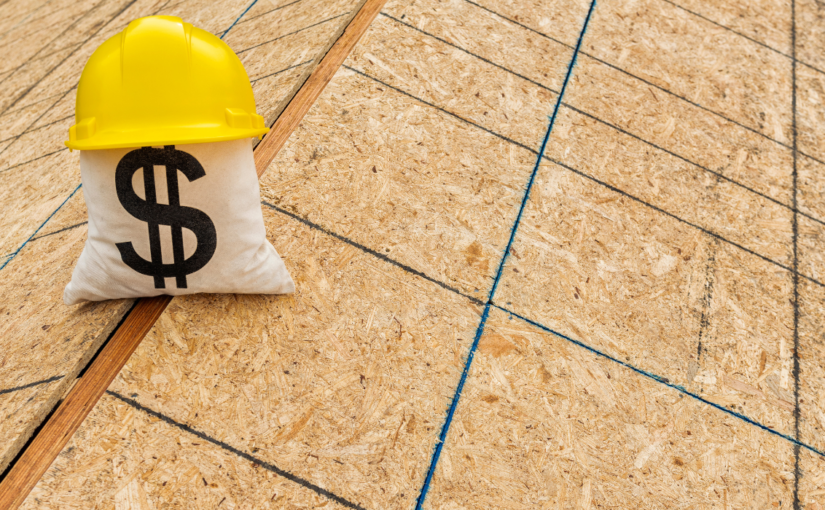back
Understanding the Various Types of Construction Loans Available
04-2023

Construction loans are a specific kind of financial instrument created to assist people and corporations in financing new construction projects. These loans are frequently complicated because they entail several stages and necessitate a thorough comprehension of the building procedure. It’s critical to comprehend the various construction financing options if you’re intending to create a new residence or commercial structure.
We will examine the various construction loan options for borrowers in this blog post. We will describe the variations among the various loan types, as well as the advantages and disadvantages of each choice.
-
Construction-to-Permanent Loans
A construction-to-permanent loan is a kind of loan that covers both the cost of building a new property and the ongoing financing when it is finished. Due to the fact that they offer a single loan that covers the whole construction process, these loans are frequently used by borrowers who want to build a new house or business property.
Loans for construction to permanent structures typically have two parts. The borrower utilizes the loan funds to pay for construction costs in the first phase, which is known as the construction phase. The financing immediately transforms to a permanent mortgage once the construction is finished.
A construction-to-permanent loan has the advantage of making borrowing easier for borrowers. Borrowers can use a single loan to finance both the construction and permanent phases of their project instead of submitting two separate loan applications. Additionally, because the lender may secure the loan with a mortgage on the finished home, these loans frequently have lower interest rates than conventional construction loans.
However, because the borrower must receive approval for both the construction loan and the permanent mortgage, construction-to-permanent loans can be more challenging to qualify for than conventional construction loans. The borrower can also be required to put down money or offer collateral to secure the loan.
-
Construction-Only Loans
A loan that exclusively offers money for new property building is known as a construction-only loan. Borrowers who already have long-term financing in place but require extra money to pay for building costs frequently use these loans.
A construction-only loan, in contrast to a construction-to-permanent loan, does not offer ongoing funding after the construction is finished. Instead, after the project is finished, the borrower will need to secure a different mortgage or some other form of financing to pay back the construction loan.
A construction-only loan offers the advantage of enabling borrowers to get funding just for the building stage of their project. This can be helpful for borrowers who have secured permanent financing but require extra money to pay for building costs.
However, because they frequently have higher interest rates and costs, construction-only loans might be more expensive than construction-to-permanent loans. A permanent loan must also be obtained by the borrower when the construction is finished, which can be a more difficult and drawn-out procedure than getting a construction-to-permanent loan.
-
Renovation Loans
Renovation loans are a particular kind of loan that provide money exclusively for remodeling or renovating an existing building. Homeowners who wish to make changes to their properties, such adding a new room or improving the kitchen, frequently use these loans.
Various financing structures can be used for renovations, based on the borrower’s individual requirements. Similar to conventional construction loans, some rehabilitation loans offer cash in phases as the refurbishment is completed. Others have a structure more like to a home equity loan and offer a one-time payment that the borrower can use to cover the costs of the renovations.
A renovation loan has the advantage of enabling property owners to make changes without having to pay for the entire project up front. Additionally, because the borrower already has equity in the property, rehabilitation loans may be easier to qualify for than conventional construction loans.
However, because they frequently have higher interest rates and costs, remodeling loans can be more expensive than conventional construction loans. Additionally, the equity in the home may restrict the amount of cash available for a renovation loan, which could be a disadvantage for homeowners who need to do substantial modifications.
In conclusion, borrowers have access to a variety of construction loan options, each of which has advantages and disadvantages of its own. It’s crucial to thoroughly weigh your financing alternatives and pick the loan that best suits your demands and financial circumstances whether you’re building a new home or remodeling an existing one. You can make an informed choice and guarantee that your construction project is completed on time and within your projected budget by understanding the many types of construction loans that are available.
F2H Capital Group is a debt advisory firm specializing in negotiating the best terms for your commercial real estate projects. The company offers a range of financial products and services, including fixed loans, bridge loans, and construction loans across all asset types. Please contact us for any of your financing needs.

